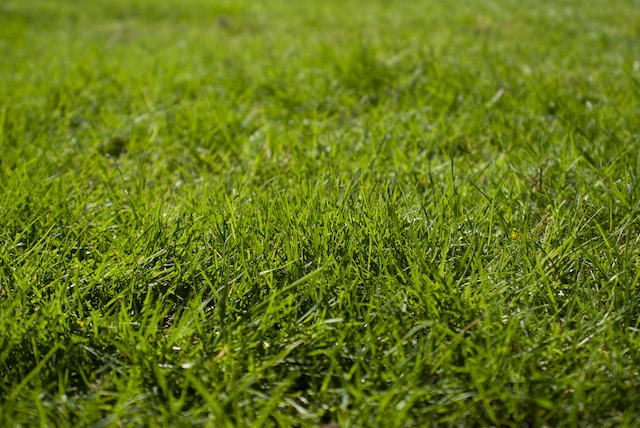
Grass is a plant, but as any keen gardener knows, plants come in all manner of colours. So, what colour is healthy grass? Read on to find out!
What colour is grass?
Tom Jones said it best when he talked of the green, green grass of home. That’s the colour grass is supposed to be. Healthy grass is a bright, vibrant green. But where does that green colour come from?
Why is grass green?
Grass makes its own food out of sunlight and water through a process called ‘photosynthesis.’ This process occurs in specialised structures within a plant’s cells called ‘chloroplasts.’ Within those chloroplasts is a pigment called chlorophyll, which absorbs light best from the blue and red portions of the electromagnetic spectrum. But crucially, it reflects green light.
Because of this, chlorophyll looks green, and therefore so do a vast majority of plants, including grass.
LEARN MORE: What Makes Grass Green?
Why is my grass not green?
At times, you might notice that your grass is not a uniform green colour. There may be patches of yellow or brown grass in your lawn. There are lots of reasons why this might be the case.
For example, when using a petrol mower, make sure you refill it away from the grass. Oil spills can kill grass, meaning the soil will need to be heavily and regularly irrigated and overseeded to replenish it.
If you discover that your grass changes colour a few days after mowing, it might be that you need to change the mower blades: blunt blades smash and tear grass, allowing disease to enter the leaves. Mowing the lawn in very dry weather is also unhealthy for the grass because it removes moisture – without which the plant will turn brown and potentially start to die off.
Pets that are allowed outside can also damage your grass. Dog urine is particularly bad for your lawn. If you notice circular brown patches surrounded by outer rings of longer, much brighter grass, your pet may be causing the problem. You’ll need to irrigate the area after each visit, and encourage your pet to use an area other than the lawn. It may be worth using ‘dog rocks’ in your pet’s water bowl to neutralise the harmful minerals in the urine.
(No pets in the house? It may be a neighbourhood pet or a local fox using your lawn as a lavatory).
Even the weather can cause your grass to turn brown. If it’s too hot in the summer, you might get dry patches in your lawn, which will quickly turn brown. Aerating the soil, and using a wetting agent on any fungal disease that has arisen, should help to resolve the problem.
Alternatively, your lawn might be suffering from a case of red thread disease. Forget yellow or brown, this can turn your grass red – and that’s definitely not a colour you want your lawn to show! This will need an application of fungicide to treat properly, which is a service we’re happy to offer.
How do I make my grass green again?
For a lot of the issues that cause brown or yellow patches on a lawn, the solution is as simple as aerating, watering, careful use of the right kind of fertiliser, and proper mowing. In extreme cases, though, you may need to completely dig up and reseed your lawn.
Here at Lawn Weed Expert, we’re passionate about keeping your lawn healthy. If you need our help to restore your lawn to its green, green glory, check out our garden maintenance services and arrange a free survey today.
Get In Touch